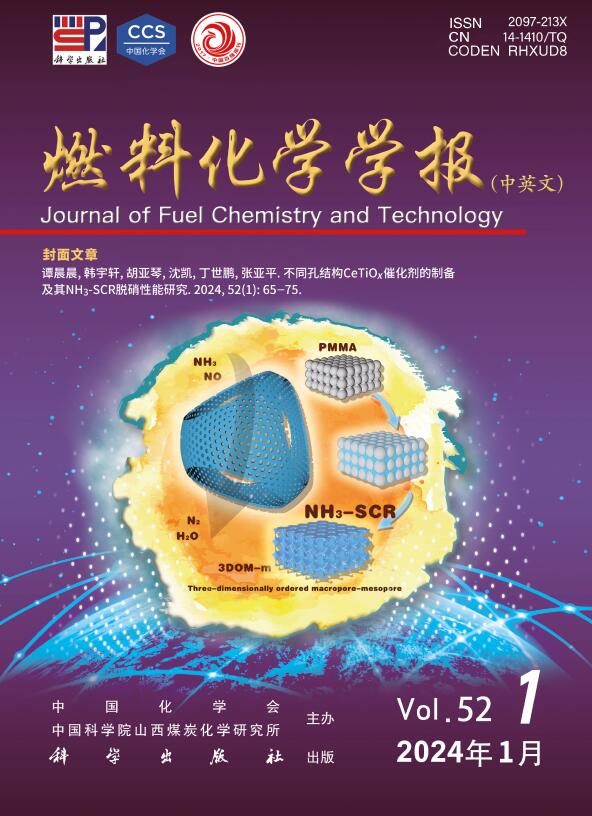Nitrogen-doped modification of carbon fiber cathode with aniline for oxygen reduction catalysis in dissolved oxygen seawater battery
Q3 Energy
引用次数: 0
Abstract
Carbon fiber has been commercially applied as a cathode material in dissolved oxygen-seawater batteries (DO-SWB). However, the low concentration of dissolved oxygen in seawater and the limited activity of the oxygen reduction reaction (ORR) restrict the improvement of battery power density. In recent years, nitrogen doping of carbon materials has attracted significant research interest. In this work, aniline(An) was used as the nitrogen source, and nitrogen-doped electrodes were prepared via a one-step electrochemical treatment of polyacrylonitrile-based carbon fiber (PAN-CF) in a mixed solution of An and H2SO4 under optimized process conditions. The electrodes were characterized using scanning electron microscopy (SEM), Raman spectrum (Raman), and X-ray photoelectron spectroscopy (XPS), combined with electrochemical testing methods to evaluate the surface characteristics and ORR activity of the electrodes, followed by an analysis of the underlying mechanism. Electrochemical modification introduced defects on the carbon fiber surface and generated pyridinic functional groups, effectively regulating the electronic structure of the carbon material, increasing the number of active sites on the electrode surface, and enhancing oxygen adsorption and charge transfer capabilities. As a result, the nitrogen-doped electrode exhibited excellent ORR performance. The optimal electrode achieved an ORR onset potential of −0.12 VvsSCE and an ORRspecific current density of 510 mA/gat −0.4 VvsSCE, indicating promising application prospects as a cathode material for DO-SWB.
氮掺杂苯胺改性碳纤维阴极用于溶解氧海水电池氧还原催化
碳纤维作为正极材料已在海水溶解氧电池(DO-SWB)中得到商业化应用。但海水中溶解氧浓度低,氧还原反应(ORR)活性有限,制约了电池功率密度的提高。近年来,碳材料的氮掺杂引起了广泛的研究兴趣。本研究以苯胺(An)为氮源,在优化的工艺条件下,将聚丙烯腈基碳纤维(PAN-CF)在An和H2SO4的混合溶液中一步电化学处理,制备了氮掺杂电极。采用扫描电子显微镜(SEM)、拉曼光谱(Raman)和x射线光电子能谱(XPS)对电极进行表征,结合电化学测试方法评价电极的表面特征和ORR活性,并对其机理进行分析。电化学修饰在碳纤维表面引入缺陷,生成吡啶官能团,有效调节了碳材料的电子结构,增加了电极表面活性位点的数量,增强了氧吸附和电荷转移能力。结果表明,氮掺杂电极具有优异的ORR性能。最佳电极的ORR起始电位为- 0.12 VvsSCE, ORR比电流密度为510 mA/gat - 0.4 VvsSCE,作为DO-SWB正极材料具有广阔的应用前景。
本文章由计算机程序翻译,如有差异,请以英文原文为准。
求助全文
约1分钟内获得全文
求助全文
来源期刊

燃料化学学报
Chemical Engineering-Chemical Engineering (all)
CiteScore
2.80
自引率
0.00%
发文量
5825
期刊介绍:
Journal of Fuel Chemistry and Technology (Ranliao Huaxue Xuebao) is a Chinese Academy of Sciences(CAS) journal started in 1956, sponsored by the Chinese Chemical Society and the Institute of Coal Chemistry, Chinese Academy of Sciences(CAS). The journal is published bimonthly by Science Press in China and widely distributed in about 20 countries. Journal of Fuel Chemistry and Technology publishes reports of both basic and applied research in the chemistry and chemical engineering of many energy sources, including that involved in the nature, processing and utilization of coal, petroleum, oil shale, natural gas, biomass and synfuels, as well as related subjects of increasing interest such as C1 chemistry, pollutions control and new catalytic materials. Types of publications include original research articles, short communications, research notes and reviews. Both domestic and international contributors are welcome. Manuscripts written in Chinese or English will be accepted. Additional English titles, abstracts and key words should be included in Chinese manuscripts. All manuscripts are subject to critical review by the editorial committee, which is composed of about 10 foreign and 50 Chinese experts in fuel science. Journal of Fuel Chemistry and Technology has been a source of primary research work in fuel chemistry as a Chinese core scientific periodical.
 求助内容:
求助内容: 应助结果提醒方式:
应助结果提醒方式:


